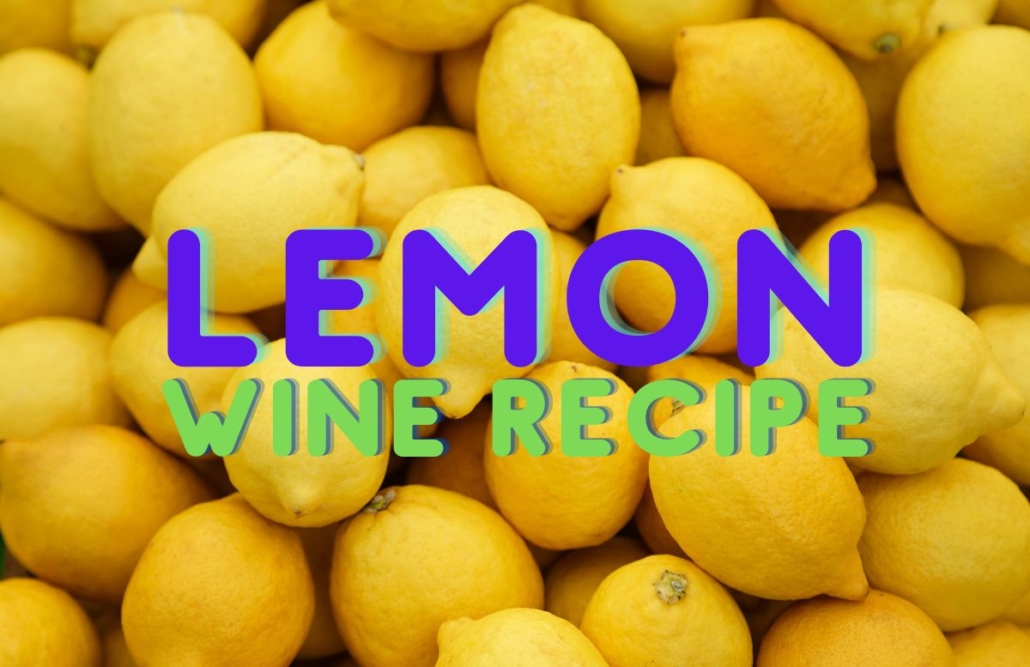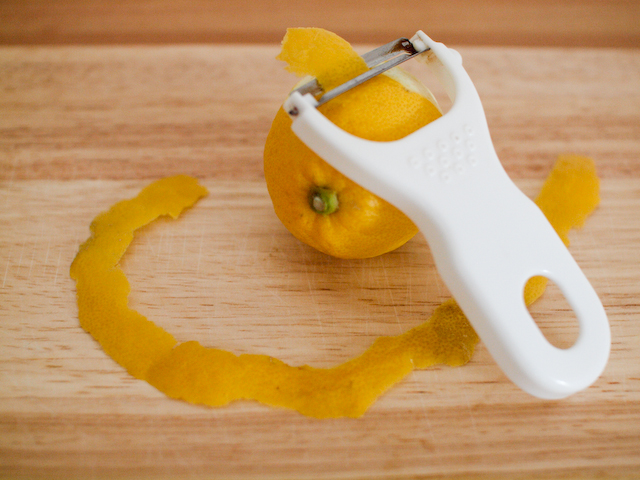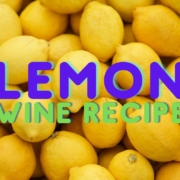Lemon Wine Recipe – Fresh & Fragrant

Lemon wine brings to mind a drink that is refreshing and perfect to sip on a warm evening.
The trouble with making such a drink is that lemons are, of course, really acidic and require a lot of dilution to bring about a fermentable and palatable must.
Lemons are 5 times more acidic than oranges and twice as acidic as grapefruit. When it comes to making wine with them this acidity needs to be diluted down so the yeast has a chance to do its thing.
When you ferment this the body of the wine can be a little lacking and we can end up with a dry and insipid wine rather than fruity and refreshing.
Table of Contents
Boosting Body
To make the lemon wine fuller flavoured we can either combine the lemons with other fruits or spices to give more flavour or we can use something like grape concentrate or raisins to add not only the body but sugars too.
If you want to make a lemon wine without any other fruit then the simplest avenue for most winemakers is to use plenty of raisins in the must to give you more complexity than just lemons alone.
Getting The Flavour From Our Lemons

Most of the flavour in lemon is not in the flesh of the fruit or juice but in the zest and the oils within the peel.
This means we need to peel the zest from our lemons but carefully avoid as much of the white pith as possible.
The pith of the lemons is the most bitter part of the fruit. If we have a lot of pith in the lemon wine then we are going to end up with a bitter finished wine.
Along with the pith, we will use the lemon flesh itself. The best way to do this is to completely cut away the skin and then slice each segment out leaving the membrane between each lemon segment behind.
This method of segmenting the lemons may seem laborious but it is the best way to leave behind as much of the bitter parts of the lemon as possible and therefore end up with a much tastier wine.
What You’ll Need To Make Lemon Wine – Makes 1 gallon / 4.5 litres
- Large Stock Pot
- Small Fermenting Bucket
- Demijohn
- Syphon
- Fine Straining Bag
- Potato Masher
- Airlock & Bung
Lemon Wine Ingredients
- 8 Lemons
- 4 litres Water
- 950g White sugar
- 400g Golden raisins
- 1/4 tsp Wine Tannin
- 1/2 tsp Pectic Enzyme
- 1 tsp Yeast Nutrient
- 1 Campden Tablet
- 1 Sachet Wine Yeast (Lalvin R2 or Gervin GV5 are good types of yeast)
Thoroughly scrub the lemons to remove any wax, take 4 of the lemons and use a peeler to take the zest off the lemons leaving behind all the pith. It is only the outermost skin we want.
Remove all the skin and pith from all the lemons and then cut the segments of all 8 leaving behind all the membrane and pith.
Roughly chop the raisins and add them to the straining bag along with the zest and segments of the lemons as well as any juice that may have escaped.
Secure the bag around the opening of the fermenter and heat up 2 litres of water to a boil along with the sugar stirring to dissolve. Pour the boiling sugar solution into the fermenter over the fruit and stir to combine. Add the remaining cool water then add a Campden tablet, cover and leave overnight.
The following morning add the pectic enzyme wait for a further 12 hours. Take a hydrometer reading and then add the yeast nutrient and yeast. Cover the fermenter and fix an airlock to start primary fermentation.
During primary fermentation give the bag with the lemons in a squeeze a couple of times a day. After 5 days remove the bag after draining it into the fermenter.
After another 2 days rack the wine into a sanitised demijohn. Attach a bung and airlock and leave to finish fermentation and begin clearing.
After 30 days rack the wine in a newly sanitised demijohn and leave to condition for around 60 days. After this time the wine should be clear and ready to bottle.
Before bottling, sample the wine and back sweeten if desired. This guide on stabilising the wine and sweetening will help.
Once bottled leave in a cool dark place for at least 6 months before sampling.




Leave a Reply
Want to join the discussion?Feel free to contribute!